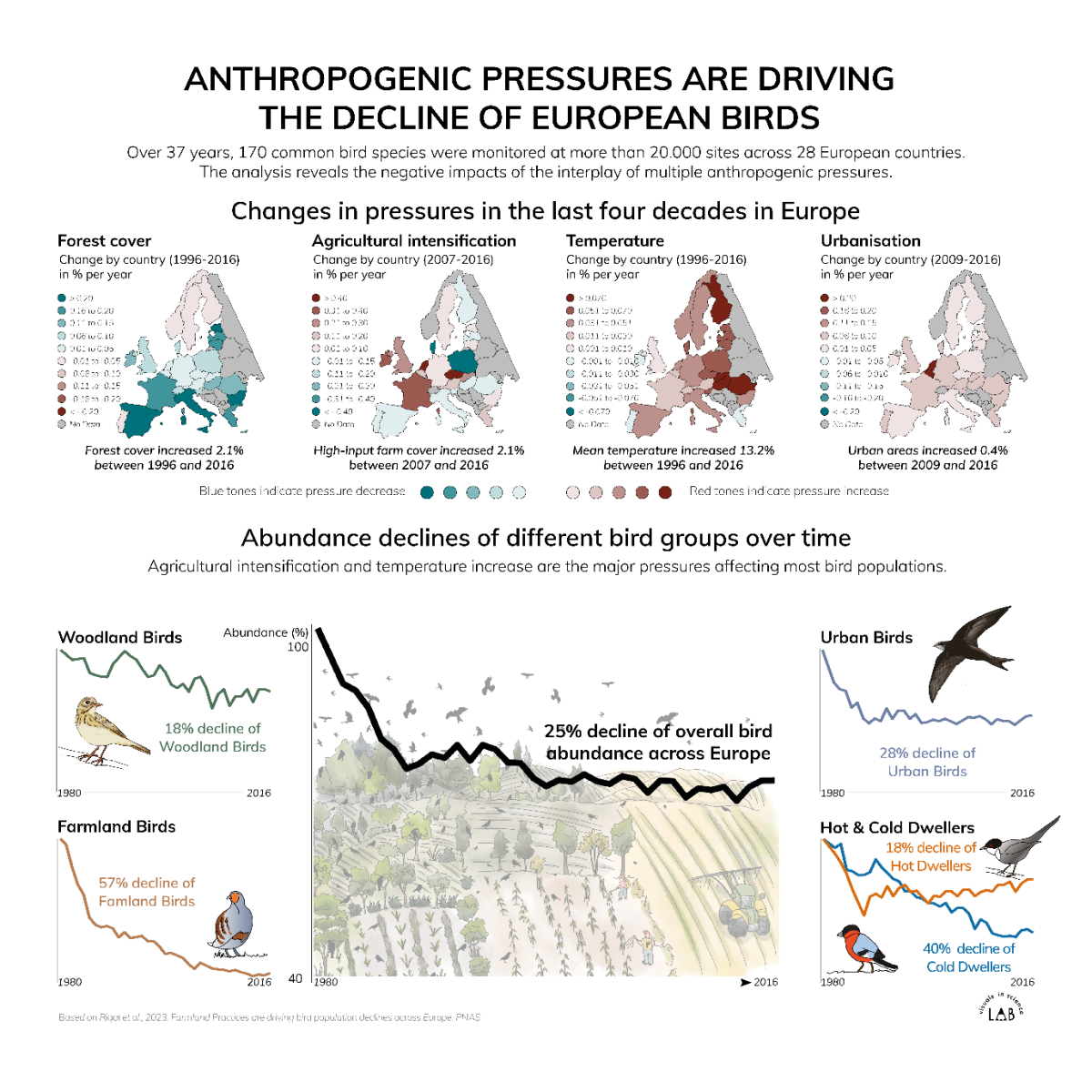
- A large study has shown that between 1980 and 2016 bird populations have decreased by 25% in the last 40 years and almost 60% in the case of rural species. This is the main conclusion of the largest and most comprehensive study so far on birds in Europe: the responsibility of fertilizers and pesticides for the collapse of bird populations in Europe. These experts have demonstrated that the artificialization of land by the expansion of urban centers also has great importance in the loss.

The study published in the scientific journal Proceedings of the National Academy of Sciences (PNAS) is entitled “Farmland practices are driving population decline across Europe”. To complete this, fifty researchers have collected data from 37 years in 20,000 places in 28 European countries, investigating the evolution of 170 bird species. Different types of pressures associated with human activity (climate change, urbanization, forest areas and agricultural practices) have been compared and have for the first time quantified and ranked their impact on bird populations.
The results are terrifying: an average of 20 million birds have disappeared in Europe every year in the last 37 years. In other words, we Europeans have about 800 million fewer birds than there were in 1980. Professor Vincent Devictor, who signs the result of the study with three other experts, confesses to the newspaper Liberation: “Exciting also for a researcher. I expected the decline of some species to slow down, but unfortunately it is not. The common gorilla population, for example, has decreased by 64%, with the risk of that common bird becoming very rare.”
As for loss, some European ecosystems are more affected than others: while the number of wild birds has fallen by 18% in forty years, the loss is 28% for urban birds such as swallows and sorbellos, reaching 57% for rural birds. The latter include the gival vegetable pitch and the rural chirt, which have decreased by 77% in Europe. The northern carboneros have been reduced by 79% and the Txistularis birds by 53%...

According to the study, the species that suffer most in this dark landscape are those that love cold, that suffer losses of 40%, and those that love heat, that have lost no more than 18%. Among them are the only ones that benefit from the general spell and multiply in the new areas, such as the head butt and the beehive bird.
Vincent Devictor, University professor in Montpellier and researcher at the National Center for Scientific Research (CNRS): “The importance of birds in an ecosystem is surprising. They eat and are food for others. They carry a lot of material, seeds. Many species are migratory. The bird is a great link generator. And what would a world without birds be? The fact that the song of the myrlo is found in the spring or a child in the forest with the txantxangorri, exceeds any utilitarian calculation. But let’s go live to the “Isil Spring” that American biologist Rachel Carson described sixty years ago in his famous book.”
The fact is that paradoxically birds die or live… to the same agriculture that leads to disaster: “The survival of agriculture is about changing modes of production. In fact, the destruction of biodiversity prevents a pesticide from protecting plants, preventing access to harvest. There is a close relationship between the presence of healthy biodiversity and the profitability of crops on the plot. There is a form of irony: as biodiversity dies, industrial agriculture is killing itself.”
It is true that in Europe there are many farmers who are producing in another crop model: they are reducing or completely abandoning the use of pesticides and chemical fertilisers, they are replanting setos (live plant fences) destroyed in these years, they are again enriching the land impoverished and worn with organic matter… But the model established by the agro-industry, based on pesticides and chemical fertilisers, continues to increase its damage. 
This has been demonstrated by the Pesticide Atlas (French and Spanish versions), promoted by the Heinrich Böll Foundation on the use of pesticides in the same periods of publication of the study on the loss of birds: “This atlas shows that we are not on the right track. The use of pesticides in the world has increased by 80% since 1990 with negative effects on the health and biodiversity of farmers and consumers. The global pesticide market has doubled in the last 20 years, reaching a business of 53 billion by 2020.”